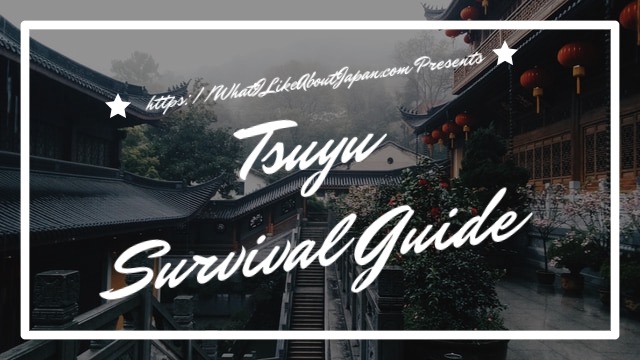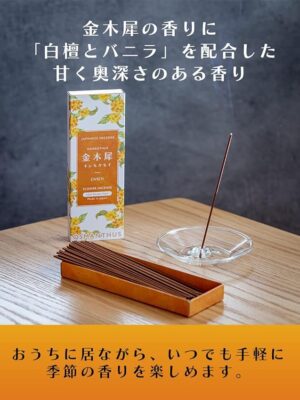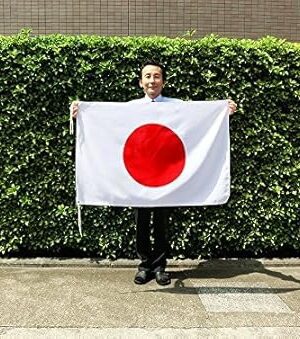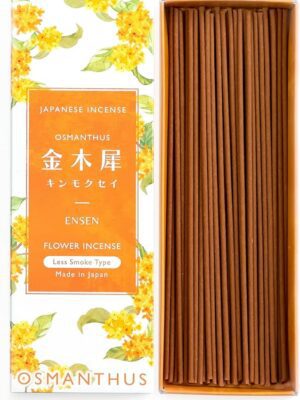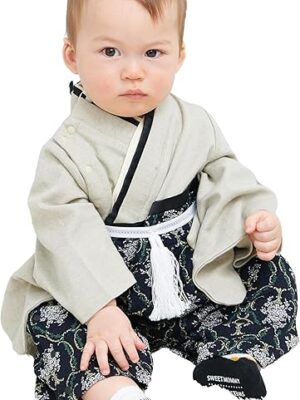Staying Healthy During Tsuyu
Share this Post
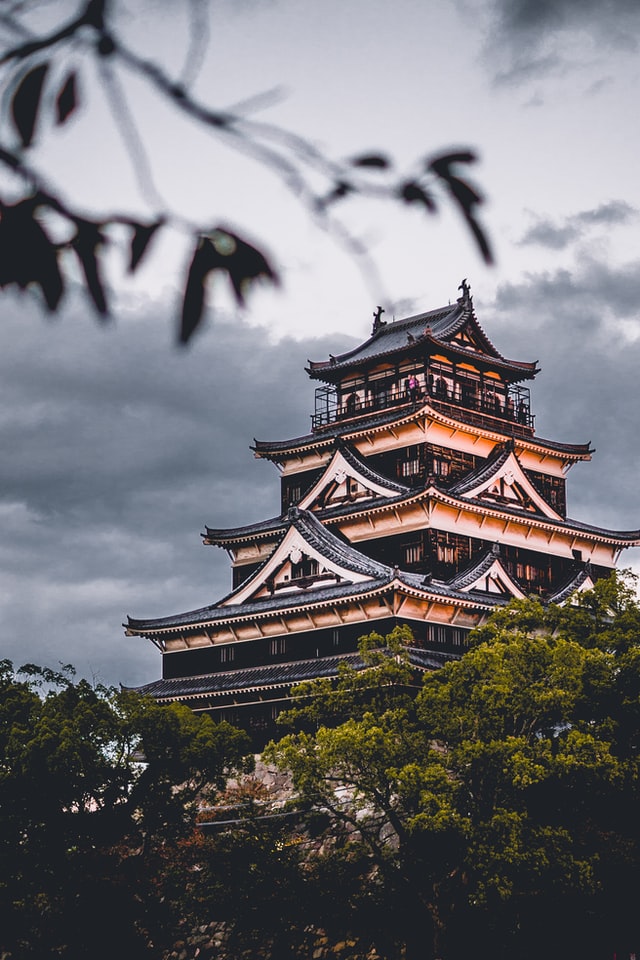
This Tsuyu Survival Guide Is for those who have just experienced the Japanese rainy season or those looking or ideas on how to get through it! Tsuyu, or the Japanese Rainy Season, is fantastically humid and lasts about a month and a half. So get ready for good times in the rain ;-D
Table of Contents
- 1. What Is Tsuyu?
- 1.1 Special Weather Conditions Causing Tsuyu
- 2. The Rainy Season In Japan Has Its Own Challenges
- 3. What To Look Out For During Tsuyu
- 3.1 Food Poisoning! 食中毒! しょくちゅうどく!
- 3.2 Mold! カビ!
- 3.3 Mental Health! 精神衛生! せいしんえいせい!
- 3.4 Landslides! 地滑り! じすべり! and Flooding! 洪水! こうずい! Oh my !!
- 4. How Do The Japanese Handle Tsuyu?
- 4.1 Kitting Out For Tsuyu
- 4.2 Managing Mold
- 4.2.1 Keep Things Airated and Tidy
- 4.2.2 Cleaning Away Established Mold
- 4.3 On Food Poisoning
- 4.3.1 Preventing Food Poisoning
- 4.3.2 Back to the Pool
- 4.4 Keeping Mentally Healthy
- 4.4.1 Personal Time
- 4.4.2 Get Out And Enjoy The Beauty Of Nature Made Possible By Tsuyu
- 4.5 Water Hazards
- 4.5.1 Flooding
- 4.5.2 First – Know Where It Is Dangerous And Where To Go
- 4.5.3 Emergency Kit and Go Bag
- 4.5.4 Know Before You Evacuate
- 4.5.5 On Landslides
- 5. In Conclusion: Having Fun During Tsuyu
- 5.1 Self-Care Galore
- 5.2 Fireflies
- 5.3 Tanabata
- 5.4 Half-Baths
- 5.5 Make Plum Wine/Syrup and UmeBoshi(Sour Plums Fermented in Vinegar)
- 5.6 Relax to the Sound of the Falling Rain
- 6. All References
What Is Tsuyu?
Tsuyu, or the Japanese Rainy Season, is also sometimes referred to as Baiyu and the Japanese monsoon. It begins south Okinawa of Okinawa by the Meiyu (Baiyu) weather front and over time drifts north. In May it is Tsuyu in Okinawa. But by June through July its over the main island of Honshu. Tsuyu normally arrives around the second week of June in the Tokyo area and does not end until near the end of July. During this time it is incredibly humid, but not particularly hot. The temperature is usually between 25 to 30 degrees Celsius (77 to 86 degrees Fahrenheit). After Tsuyu the daily average temperature is usually around 30 to 35 degrees Celsius (86 to 95 degrees Fahrenheit)!Unlike the true monsoon further south in India or the Philippines, this period of time in Japan is normally overcast with intermittent rain every now and then, with a couple of sunny days to break up the monotony. It is really good advice to just carry a compact umbrella around with you where ever you go. On a side note, there are no public holidays during this time, very few festivals, and people are usually hard at work so they can enjoy summer vacation in late July and August. Therefor, if you want to get away from the crowds, and enjoy overcast, wet and humid weather, then this would be an ideal time to travel around Japan. Think Southern Gothic in East Asia.
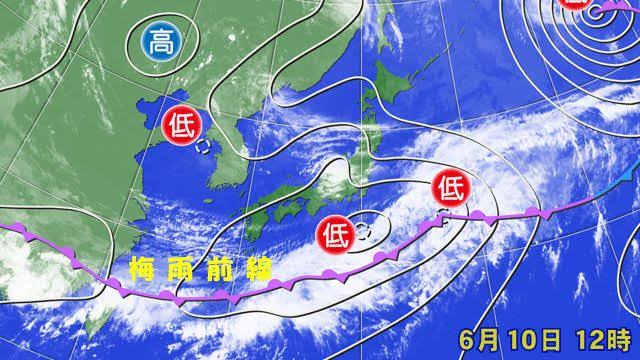
Special Weather Conditions Causing Tsuyu
The Meiyu (aka Baiyu) weather front causes Tsuyu (Baiyu), the Japanese rainy season. This front extends along the jet stream dividing the northern arctic circulation and the southern tropical circulation. It stretches from the Tibetan Plateau to Japan. It is relatively stationary only moving north slowly over two or three months. the Meiyu Front hovers over Taiwan and Okinawa from mid-May to June. Slowly the front moves northward and generally enters Russia’s Primorskii Krai, South Korea and Tokyo area from early to mid June and lasts there untl early to mid July. Somehow it bypasses Hokkaido entirely but makes its way to East China from July to August.Reference: Meiyu Front @ Wikipedia.org
Reference: East Asian Rainy Season @ Wikipedia.org
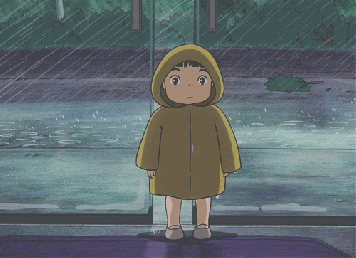
The Rainy Season In Japan Has Its Own Challenges
Food poisoning, unpredectable boudts of rain, around fifty cloudy days in a row with high humidity can make some a little wacky, and then there is the mold and the threat of landslides and flooding! Tsuyu is a special sub-season with its own challenges. Here are the big problems just about all people face during tsuyu and some ways to get through to the other side and even have some fun along the way.What To Look Out For During Tsuyu
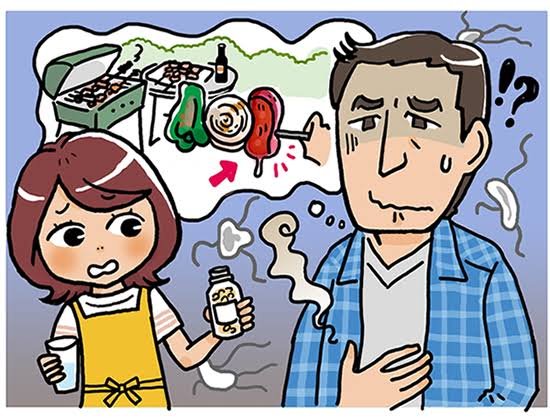
Food Poisoning! 食中毒! しょくちゅうどく!
Higher humidity and heat make perfect breeding conditions for fungi and bacteria. Perishable foods left outside over night may not be good to eat by the next morning. This includes salads. Apparently a lot of food poisonings comes from the lettuce. Though the lettuce leaves don’t look bad, the bacteria growing on them can do bad things to you. If you ever wondered why each individual cookie in a box of cookies has its own plastic wrapping in Japan (or east Asia in general), now you know.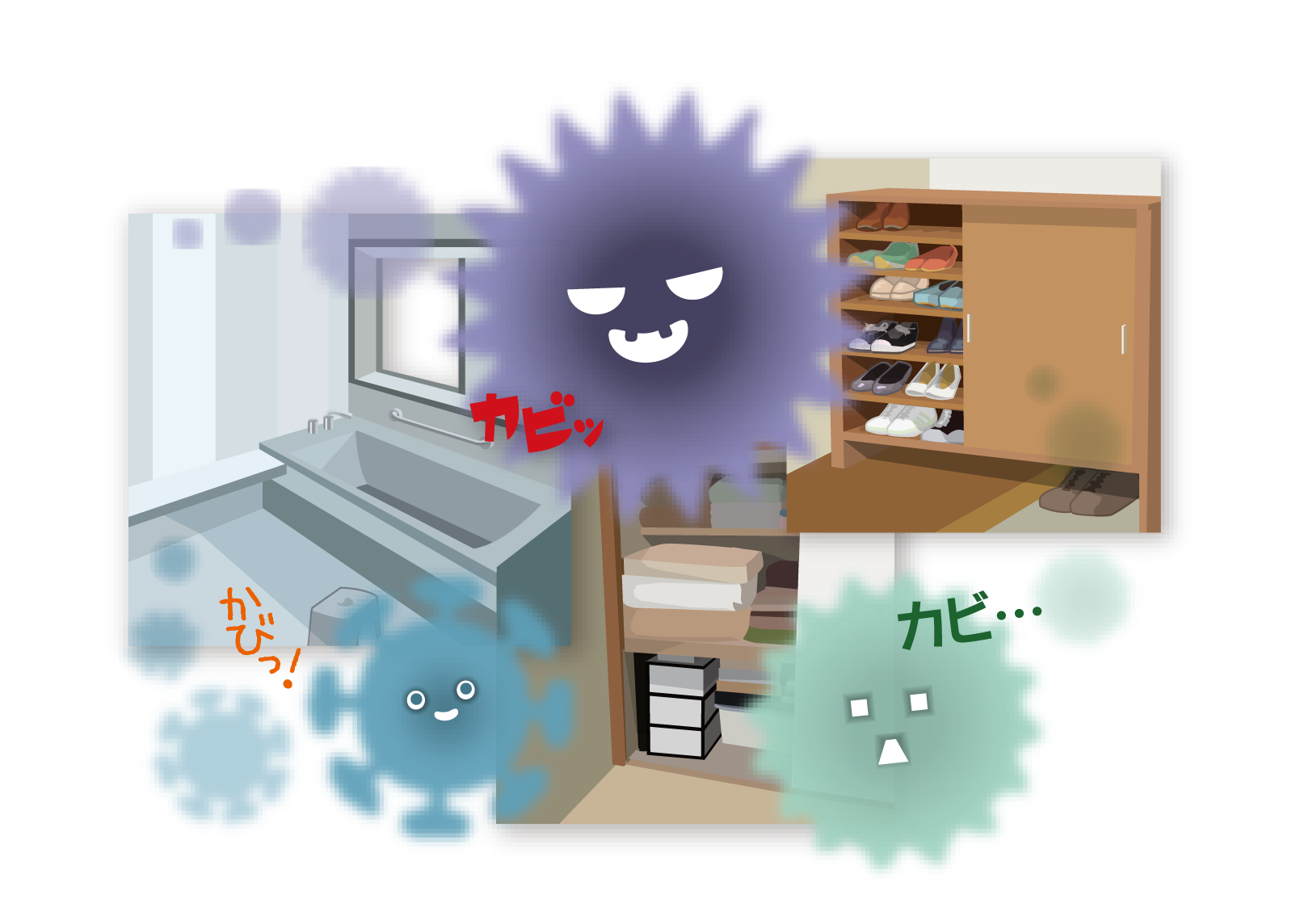
Mold! カビ!
Once mold has a foothold, it is really difficult to get rid of. Not only is it unsightly, it can also be toxic; its spores can cause allergies and atopic diseases (allergic immune reactions affecting the skin). Plus, later it is really difficult to clean off. The mildew stains are basically permanent. The easiest place for mold to get started is in the shower room, followed by the toilet and washrooms, then the kitchen, and finally the open rooms and closets. I can attest that anything made of leather is in especial danger during this time! However worry not, there are an array of things you can do to keep the moldiness at bay.href=”https://www.kyoeikasai.co.jp/kpa/agent/monosiri2015-7.htm”>The rainy season. How to prevent mold and get rid of it?
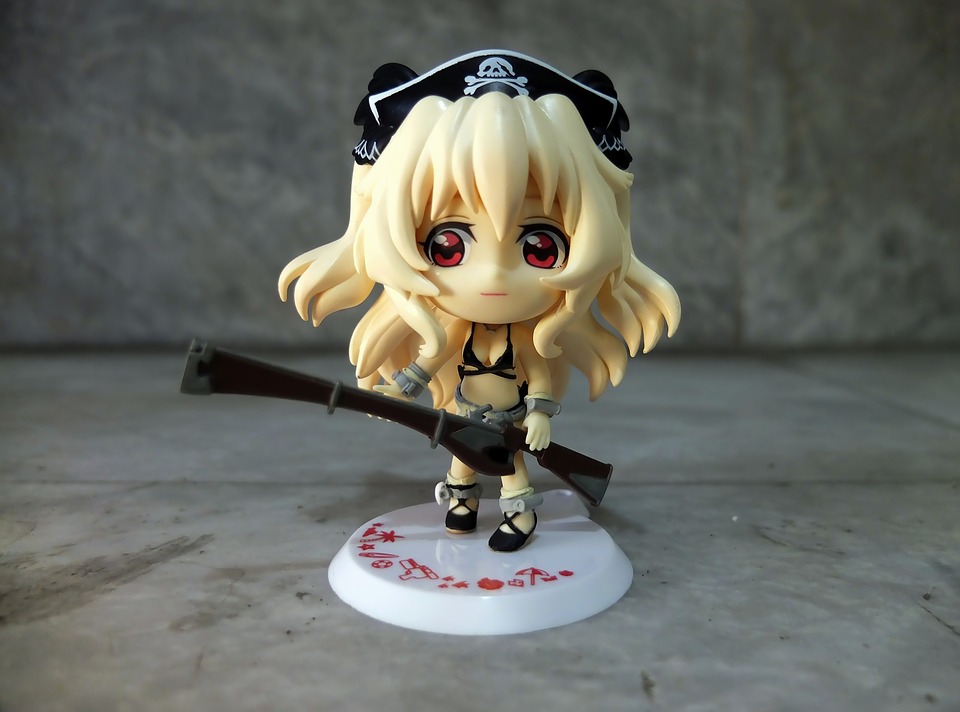
Mental Health! 精神衛生! せいしんえいせい!
Growing irritability and general moodiness over the weeks isn’t just a personal issue. Everybody around you is going through the same thing. Lack of adequate sunlight, necessary for the body to produce vitamin D, and/or keeping mostly cooped up indoors can lead people into light depression or seasonal affective disorder. People generally get a kind of cabin fever, only it doesn’t end when they go outside. The suffocating humidity is everywhere.Reference: Because of the rainy season…? Causes of physical and mental upset in June and how to survive
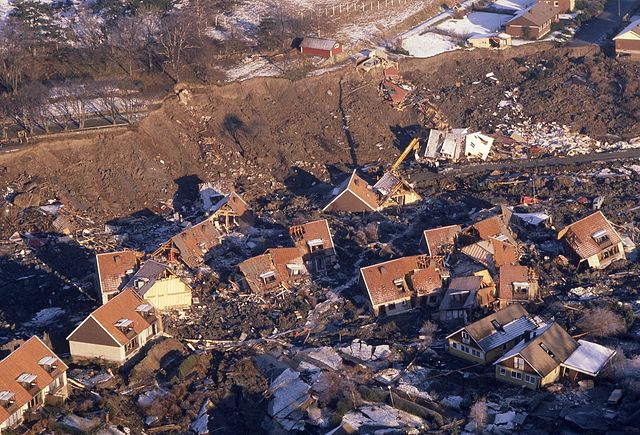
Landslides! 地滑り! じすべり! and Flooding! 洪水! こうずい! Oh my !!
Flooding and landslides occur almost every year. All rice farming and industrial production occures on plains near the ocean, or in flat land in mountain valleys, usually with a small to medium sized river running through it. These are prime locations for flooding. Also, most mountains have a top layer of lomas earth and large stones that can become ustable when saturated during heavy rains. Its this unstable earth on steep slopes aided by gravity that causes the landslides. The Japanese government built up the embankments of most rivers across the county, but heavy rains do cause breeches in these defences. Once a dike or embankment has been breached all the surrounding protected area is soon underwater. These plains and river valleys are also where most people in Japan live.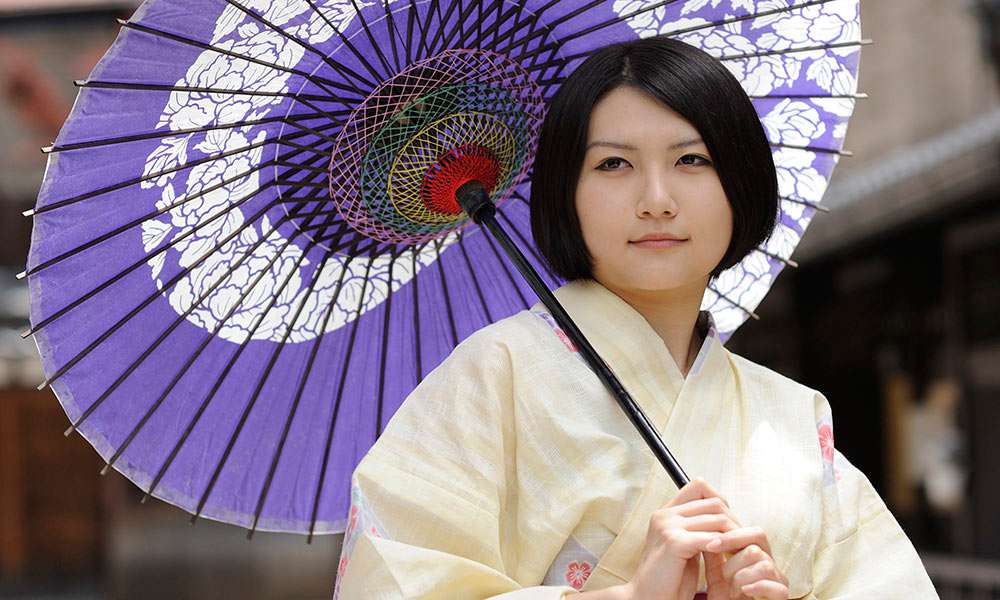
How Do The Japanese Handle Tsuyu?
OK. The problems have been defined. So how do you go about dealing with them. Luckily the Japanese have been going through this for a really long time and have come up with some rather ingenius and usually low cost ways of handling these issues.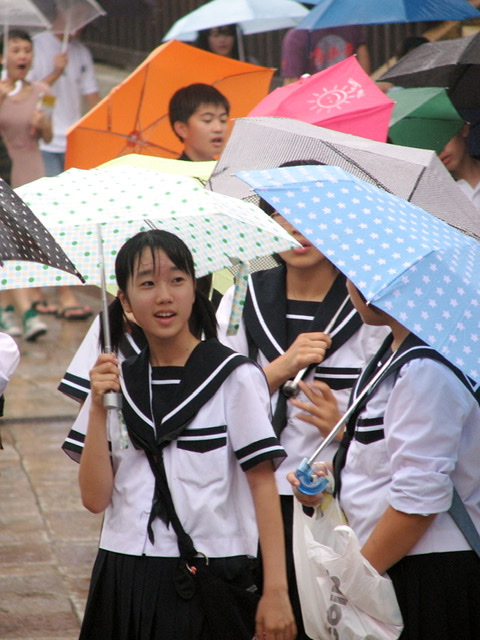
Kitting Out For Tsuyu
It is important to keep the bulk and weight down, especially if you are travelling on crowded subways in Tokyo during rush times. So here are some things that you will need to get by. Many of these things can be bought at home centers or maybe even at convenience or ¥100 stores. I provided links to Rakuten if you want something a little more fancy.- Raincoat With It’s Own Small Carrying Bag
- Rain Boots: Women’s And Men’s
- Small Folding Umbrella
- Waterproof Bag To Protect Your Books Or Computer
Reference: https://livejapan.com/en/article-a0002433/

Managing Mold
Keep Things Airated and Tidy
Some strategies to keep the mold from getting started are to keep your apartment airated and dry. For people that have it, airconditioners have a function to dehumidify the air. The kanji on your air conditioner remote control looks like this “除湿”. It means “Dehumidifier” and is pronounced “Joshitsu”. Also it is strongly suggested to keep furniture such as bookshelves, sofas and cabinets about five centimeters from the wall in order to allow addequate airflow. Large closets should be left somewhat open to increase air circulation as well. If you sleep on a floor mattress it should be propted up in the day time to encourage drying out. Keeping the apartment clean before and during Tsuyu also helps to keep down the micro dirt particles that mold love to live on. Vaccuming or mopping the floors frequently is seen as just good Tsuyu hygene. Before the onset of Tsuyu, winter clothing that won’t be worn and cleaned so often in the summer months should be stored away. Curtains should also be cleaned more often at this time. The wooden panelling around windows and doors are places where condensation collects and should be wiped down with a towel when water acculation is noticed. Airconditioners themselves can also be a source of mold and spreading mold spores. Before Tsuyu the air conditioner filters should be thoroughly cleaned and all mildew around the air conditioner’s vents should be cleaned away using alcohol spray. Throughout Tsuyu the filters should be cleaned regularly. It is suggested that every three years the air conditioner itself should be taken apart by a professional and cleaned to get rid of any mold on the inside of the machine. From the time before airconditioners were common, there was another way to dehumidify your big rooms and closets, at least partially. The Joshitsu-Zai (除湿剤) are small containers of plasticky type balls that absorb the moisture in the air, gradually changing into a liquid. These are especially good for large closets. But some strategically placed around the apartment work better than nothing. Silica packs from any dry goods or a box of something electronic are really good for keeping your drawers dry. Just put one or two in each drawer and replace them every week or so to keep the things inside mostly dry. It helps to have a supply of these on hand for Tsuyu so I actually collect them over the year in a jar to be used just at this time.Cleaning Away Established Mold
Once mold or mildew has established itself somewhere, it has to be cleaned away immediately. There are various chlorine based sprays that you can use to do the job. A simple and very cheap cleanser you can make on your own is to mix one cup of chlorine and 4 cups of water in a spray bottle. This will take care of most mold and midew outbreaks without causing a lot of discoloration if used sparingly on the surface. Kabi KiRa- (Mold Killer – カビキラ-) is relatively inexpensive and sold widely at home centers. These cleansers are quite effective on tiles or hard plastics like you find in shower or washrooms, but in other parts of the apartment they may be too strong as they can bleach out colored surfaces like wallpaper or wood. For more delicate parts of the apartment alcohol based sprays can also do the trick in killing the mold, but they cannot repair the coloration changes. It is strongly advised not to mix any cleansers together (especially chlorine and citric acid based cleansers) as the result could be a toxic chemical reaction producing a gas that can hurt you if inhaled! Also, take care to use these chemical agents in a well ventilated area or even while wearing a protective mask as the fumes (especially the chlorine or alcohol based sprays) can be harmful if breathed in or irritating to your eyes.Reference: Ten proactive chores before the rainy season! Tips for things to do before the rainy season, cleaning methods, etc.
Reference: Measures against rainy season (humidity) and mold
Reference: Fear! Preventing the rain from damaging your health and your home! @ Dinos.co.jp
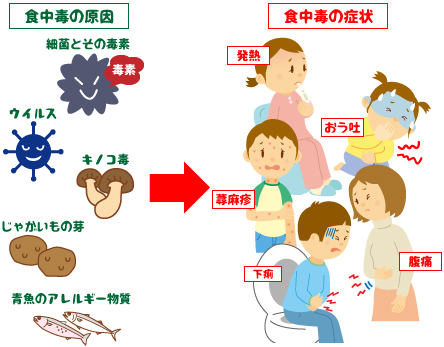
On Food Poisoning
Preventing Food Poisoning
The rule of thumb is to put everything into a container and put leftovers into the refrigerator as soon as you are finished eating. Don’t leave anything out that you intend to eat later. Food left out over night on the table might be bad by the next morning. Also, don’t forget to wash your hands before touching your food like getting a slice of bread. Bacteria from your hands is transferred to the uneaten slices in the bag. It will get moldy faster than bread touched by clean hands. Many people like to prepare their own O-Bento. The general process goes like this.- First wash your hands.
- Then put a kind of antibacterial film in the Bento Box (Japanese Lunchbox) called Bento Bako Koukin Shiito (弁当箱抗菌シート).
- Afterwords put in the food seperated by compartments.
- At your place of work you should refrigerate it as soon as possible until its time to eat.
Most workplaces have a microwave so reheating should not be a problem. And of course make sure your food is as fresh as possible before you put it into the Japanese Lunch Box.
I feel it is a bit too much, but some suggest foregoing eating salad at all from the Bento Box and only eating cooked foods during this season.
Some simple ways of preventing food poisoning at home are…
- Store ingredients at a low temperature in the rerigerator.
- Firmly heat the food all the way to its center.
- Sterilize cutting boards, kitchen knives and sheathes in boiling water or bleach.
- Work with and store food and cooking utensils/conainers seperately.
- Eat the food soon after cooking and store at a cold temperature in the refrigerator quickly.
Tsuyu Food Poisoning Pathogens
| Pathogen | Conditions and Sources | Incubation period and Symptoms |
|---|---|---|
| Campylobacter | Dies in the open air, but can survive in temperatures below 10 degrees Celsius. Found in raw or undercooked chicken, beef liver, sashimi, and semi-raw products. | Incubates for about 2-5 days and causes diarrhea, abdominal pain, fever, headache, chills, vomiting, etc. |
| Stapphylococcus | Incubates from 1/2 to 6 hours and causes nausea,vomitting, etc. Symptoms usually improve after 24 hours. | Resistant to heat, dryness, and even grows in both high acidity and alkalyne environments. Can be found in rice balls (onigiri), bento (store bought Japanese lunch boxes), etc. |
| Clostridium Perfringens | Usually occurs in airless containers used for storing food when a lot has been made. | Incubates for 6-18 hours and causes abdominal pain, diarrhea and nausea. |
What If You Get Food Poisoning?
Since food poisoning can be fatal, you should go to the hospital right away. The telephone for emergencies is 119. Don’t forget to bring a baggy of either the suspicious food or of the vomit to help determine the cause of the sickness. It is suggested that you should lie on your side to help with vomitting and to keep from choking. Also, in this case diarrhea is the body trying to pass the poison quickly, so going to the toilet often is a good thing, just remember to drink a lot of water with some salt and/or sugar in it to replace the lost fluids and nutrients. The Japanese anti-diarrhea medicine is called “Geridome-no Kusuri” (下痢止めの薬) and can be bought at drug stores across the country, just in case you wanted to go that route.Reference: Digi-Joho.com
Reference: Food Poisoning During Tsuyu @ Alsok.co.jp
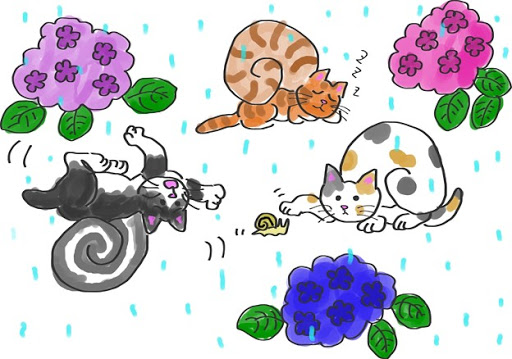
Keeping Mentally Healthy
Personal Time
The onset of Tsuyu can cause some stress on people who just started jobs in April and are still adjusting. To help compensate for the extra stress it is suggested to take some personal time. Finding time to do what you like and just relaxing are good ways to recharge. People feeling stress from Tsuyu should also be careful to get enough sleep by going to bed and waking up regularly at the same times each day. Also warm baths between 37 and 40 degrees can help to relax the muscles and with headaches by increasing the blood flow throughout the body. It is also important to go out and get some sunlight whenever it decides to shine through.Get Out And Enjoy The Beauty Of Nature Made Possible By Tsuyu
Hydrangeas, Hollyhocks and Japanese Irises blossom during this season. After the cherry blossom season this is probably the best time to view the beautiful flowers blossoming in Japan. Almost all the public parks and gardens would have planted a variety of these flowers that blossom during tsuyu. There is only one way to enjoy such abundance of natural beauty, you have to get out doors. Accompanied by a raincoat, rainboots and an umbrella, you should be pretty dry. At the gardens and parks there will only be a dedicated few people and the clouds will give cover from the scathing sun. Also the rain will keep down the dirt and knock down the pollution so you might be able to breathe more easily than normal if you are in a major city. It is a one of a kind season that really shouldn’t be missed!Reference: Because of the rainy season…? Causes of physical and mental upset in June and how to survive
Water Hazards
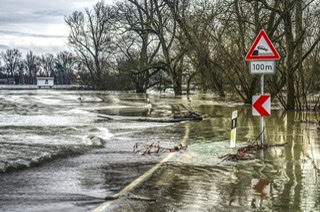
Flooding
First – Know Where It Is Dangerous And Where To Go
Every city in Japan has a Flooding Hazard Map. The Flooding Hazard Map in Japanese is KouZui Haza-do Mapu (洪水ハザードマップ). You can find these at city offices and libraries in your city. They are color coded to indicate the zones of danger and the level of danger and will also indicate Disaster Centers and Ecacuation Sites (usually the same site) that you can evacuate to in times of emergency (usually a school nearby). You should be familiar with your area’s propensity to be flooded and where you should go if it were to occur.Some articles also suggest to take special care for flooding if the place you live in has “Ryu”, “Nada”, and “Sawa” in its name and that you should check the old place name of where you live in case it was changed in developement and originally the above questionable syllables in its original name. Many people choose to live on the second or third floors of their apartment buildings in case of floods and have emergency kits.
Emergency Kit and Go Bag
You can buy a premade emergency kit at a store, online, or make your own. In such a kit you should have an AM capable radio, food and water for three days, toilet paper, a thermal blanket, and a first aid kit. In your Go Bag you check out the recommendations from your local area in their Disaster Prevention Manual. Every city should have one and they can also be picked up at the City Offices and Library.
Know Before You Evacuate
Proper preparation prevents being caught off guard. You should know in advance by checking out your evacuation sites, evacuation routes, and methods to contact other people such as friends, family, coworkers, and bosses. Finally, find out if there had been floods in your area in the past and how bad they were. It should give you some idea what to prepare for. Here are some resources to help you out a little, but these are just to get you started and shoudn’t be considered exhaustive.
Web Resource: River Disaster Prevention Information (Ministry of Land, Infrastructure, Transport and Tourism)
Web Resource: High Resolution Precipitation Nowcast (Meteorlogical Agency)
Copy and Do A Google Search: 防災メール (#Your Local Area#) – BouSai Me-ru – Your Local Area Disaster Prevention Email for Early Disaster Alerts
Reference: The First Rainy Season In Reiwa May Be “Heavy Rain”
Reference: Floods Floods – Be Prepared For The Rainy Season! How To Collect Information From Local Governments
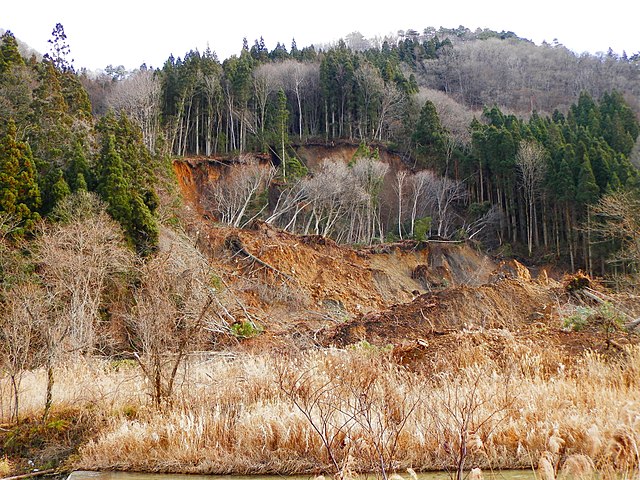
On Landslides
If you live in a mountainous or hilly area you are at risk for landslides. They usually occur during Tsuyu or Typhoons because of over abundant groundwater, the weakness of the areas geology, and the slope of the hill or mountain. It is rather more easy to say what places could have a landslade, than to predict that a place will have a landslide. There are various measures that the Japanese government has gone through to help shore up the mountain sides such as making dams in the mountains to control the flow of water, setting the sides of hills and mountains with concrete, building holding wells, etc. During severe weather be prepared to evacuate to a Disaster Center which you can find on the Hazard Map from your local city office or library. In case of disaster conditions please pay close attention to the alerts on your TV or SmartPhone. Definitely have an Emergency Kit and/or Go Bag prepared and ready to go and have previously reviewed your evacuation routes. It is far easier to get out of the way of a potential landslide before it occures during climatic conditions than when it is happening. Because of the sudden nature and difficulty in accurately predicting where landslides occur it is very prudent to act proactively. If there is a sudden and prolonged heavy down pour, you should probably look for safety just in case.Sometimes the landslide doesn’t occur during the heavy rain exactly and in this case there are some warning signs you can look out for an imminent landslide.
- The gutters of the roads and waterways of the fields are misaligned or damaged
- Cracks on the Ground or Road. These occur on the boundary of the moving landslide area and the stationary area. The ground kind of bunches up or stretches there.
- Cracks or bulges in the hillside retaining wall along the road. It can also be slanted or swollen.
- Deformation of Buildings. Some telltale signs of this is the doors won’t shut properly and the floor will make sqeaky noises on its own.
- There is water springing from the cliffside.
- The ground is cracking.
- The mountain is making sounds and the trees on it are also making cracking sounds.
If you notice these things you should evacuate immediately! The landslide can start out slow but can pick up speed pretty fast. Get to safety at once!
Reference:https://www.mlit.go.p/mizukokudo/sabo/jisuberi_taisaku.html
Reference:Mechanism Of Landslide
Reference:History Of Disasters In Shimane Prefecture
Reference:Let’s Prevent It Together: Landslides
In Conclusion: Having Fun During Tsuyu
Self-Care Galore
You are stuck inside for about a month and a half, so take good care of yourself with what you have. Any other time you might feel gulty about being a recluse, but this season is the perfect excuse to indulge in guilty pleasures. Here are a bunch of rainy day ideas and acitivities to last all season long.- Playing Around On Your Smartphone
- Playing Video Games
- Watch Videos Online
- Making Future Plans
- Read
- Learn Something New Online
- Clean Your Home
- Write in a Blog on Journal
- Cook
- Write Your Own Short Story
- Study
- Contribute Your Knowledge to Wikipedia
- Study Makeup
- Talk To Friends and Family Online
- Do Yoga
- Go For Walks in the Rain
- Manicure
- Play Board Games With Friends
- Practice Arrangig Your Hair
- Start A New Craft or Hobby
- Go See Hydrangeas
- Research Something You Want to Do
- Watch A Movie
- Make Your Own Short Movie
- Sing Karaoke At Home
- Start A Side Hustle
- Go To A Museum
- Visit The City Parks and Gardens
- Go To An Indoor Themepark
- Do Stretches
- Chat At A Cafe
- Help Somebody
- Eat At A Slightly Better Restaurant Than Usual
- Go To Disney Land or Sea
- Start Home Brewing
- Participate In An Adult Social Studies Tour
- Relax And Take Naps
- Go Out With A Stylish Umbrella
- Draw Or Paint A Picture
- Wear Fashionable Rainboots
- Explore Your Local Area
- Go Out With Your Favorite Bag
- Take Photos Of Your Favorite Places In The Rain
Reference: [20 best ways to enjoy the rainy season] Let’s have a happy day on a rainy day♡
Reference: How to enjoy the rainy season
Reference: My “How to enjoy a rainy day”
Reference: It’s not enough just to sleep! 5 ways to enjoy the rainy season☆
Reference: Happy diary
Fireflies
In the countryside along slow moving streams and rivers in the beginning of July is when fireflies come out. Usually they come out around 8 o’clock at night and sometimes can be found in bamboo forests as well. These are a real treat and you should definitely look into if there are any in your area. The keywor to google is “蛍” or “ホタル”, pronounced “Hotaru”.
Tanabata
Julu 7th every year is a special festival called Tanabata “七夕飾り”. This festival celebrates two star crossed lovers who can only meet on this day every year. The tradition is to write a wish on a piece of paper, fold it longways a couple of times, then tie it onto a bamboo branch at shrine or temple. There is a lot more, but that is for a different article. You can check out a little more about it here.
Half-Baths
You basically just fill the bath tub half way with hot water and just soak up to your thighs. It originated in Korea and has spread to Japan as a kind of home remedy to increase circulation. Check out the article below about some of the ways some Japanese people have been trying to make it more interesting!
Reference: Wacky Japanese bathers are taking their half-body bathing techniques to the next level
Make Plum Wine/Syrup and UmeBoshi(Sour Plums Fermented in Vinegar)
June 6th is the unofficial day to go out and make stuff with plums! You can make your own Plum Wine or UmeShu. I wrote an article about it here. You can also make UmeBoshi using vinegar or Plum Syrup with rock sugar.
Relax to the Sound of the Falling Rain
Many sources I have read said “come to love the sound of the rain.” This makes sense as there really is no way to get away from it! However, it is relaxing to sit outside with a cup of coffee and a book, listening to the sound of the rain. Or even just going out for a walk and taking in how the world looks on a rainy day is really nice. And its not going away for a month and a half. So you had better find something that you like about it!
All References In No Paricular Order
In English
Five Ways to Survive the Rainy Season @ SavvyTokyo.com
5 Awful Things About Japan’s Rainy Season @ TsunaguJapan.com
Tsuyu Rainy Season @ Digi-Joho.com
https://livejapan.com/en/article-a0002433/
https://matcha-jp.com/en/309
East Asian Rainy Season @ Wikipedia.org
Meiyu Front @ Wikipedia.org
Making The Most Of The Rainy Season @ Hoshinoresorts-Magazine.com
In Japanese
Food Poisoning During Tsuyu @ Alsok.co.jp
The rainy season. How to prevent mold and get rid of it? @ KyoeiKasai.co.jp
Fear! Preventing the rain from damaging your health and your home! @ Dinos.co.jp
Ten proactive chores before the rainy season! Tips for things to do before the rainy season, cleaning methods, etc. @ AllAbout.co.jp
Measures against rainy season (humidity) and mold @ KIS.gr.p
Because of the rainy season…? Causes of physical and mental upset in June and how to survive @ Health-Sunchlorella.jp
https://topic.life-ranger.jp/column/42871
https://www.mlit.go.p/mizukokudo/sabo/jisuberi_taisaku.html
Floods Floods – Be Prepared For The Rainy Season! How To Collect Information From Local Governments
River Disaster Prevention Information (Ministry of Land, Infrastructure, Transport and Tourism)
High Resolution Precipitation Nowcast (Meteorlogical Agency)
[20 best ways to enjoy the rainy season] Let’s have a happy day on a rainy day♡
Reference: How to enjoy the rainy season
My “How to enjoy a rainy day”
It’s not enough just to sleep! 5 ways to enjoy the rainy season☆
Happy diary
Wacky Japanese bathers are taking their half-body bathing techniques to the next level
Images Thanks To Maasaki Masuda @ DailyPortalz.jp,YokinaLiving.Wordpress.com,Alsok.co.jp, , KyoeiKasai.co.jp, Runa Tsukino @ Health-Sunchlorella.jp, Vinsky2002 @ pixabay bantersnaps on Unsplash
, https://ja.wikipedia.org/wiki/ファイル:Tuveraset_GNM7033-002.jpg Svenska @ Wikipedia.or, https://japan-magazine.jnto.go.jp/en/1404_umbrella.html Japan Monthly Web Magazine by JNTO, Photo by Hsu JU-I on Unsplash, Craig @ Wikipedia.org, Kakamigahara City Website, 歩鷹 @ PhotoZou.jp, 白石准 @ PhotoZou.jp, distelAPPArath @ PixaBay.com, Apple2000 @ Wikipedia.org, BudgmeによるPixabayからの画像.
Course 23 – Takao Hachioji Walking Course | 高尾八王子コース
August 16, 2024Course 22 – Fuchū Kokubunji Walking Course | 府中国分寺コース
August 14, 2024Course 21 – Inokashira Jindaiji Walking Course | 井の頭深大寺コース
August 7, 20240

